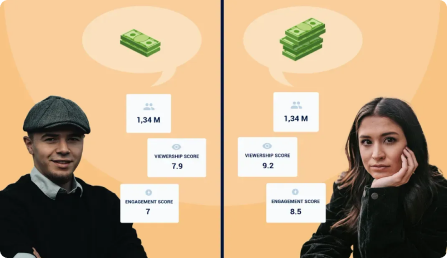Awareness
In terms of brand awareness, marketers examine effective ways to penetrate the market and increase the familiarity of the target consumer with the brand’s products. Reach, frequency, and video views are some of the most common brand awareness metrics. Influencer marketing is a cost-effective way to generate awareness: Brands running Facebook and Instagram video views campaigns to generate awareness in the GCC market might experience an average CPV that ranges from $0.02 to $0.1 when targeting a well-defined audience from their own channels.
An analysis on several content creator campaigns that we ran has yielded a CPV that is 80% lower than brand-distributed content, powered by the much higher potential to generate organic views.

Engagement
In terms of engagement, influencer content is likely to generate more audience interactions than content syndicated by the brand. This is due to the fact that people tend to get influenced by human recommendations before making a purchase as the trust relationship they have with other human beings is stronger than the one with companies trying to sell a product in order to increase their profit.
Going back to the MENA region, brand channels can gather an engagement rate ranging from 1.5% to 6% on their Facebook and Instagram engagement campaigns while creators and digital talents can accumulate engagement on a single ad with a rate that ranges from 7.5% to 11%. The cost of engagement (CPE) for influencer paid media campaigns ranges from $0.004 to $0.03 while it varies greatly for brand channels depending on the message, the call-to-action, and the targeting and might reach a value of $0.50 per interaction.
Organic engagement is also an important metric to monitor when considering influencer marketing campaigns. The engagement rate for organic posts is large for micro-influencers and it could even exceed 20%.

Customer acquisition
Social platforms provide options that allow marketers to create ads that enable brands to acquire potential customers from influencer marketing campaigns by converting them into site visitors, newsletter subscribers, or social followers. The most common ways to acquire audiences are social campaigns that redirect users to the brand’s website, campaigns that track on-site submissions, and campaigns that retarget users based on previous exposure to branded content. A finding from Twitter and Anallect in 2016 deduced that 40% of people say they’ve purchased an item online after seeing it used by an influencer on Instagram, Twitter, Vine, or YouTube.
As more brands move into e-commerce, and as technology develops to streamline the processes and management of end-to-end influencer campaigns, will influencers become the primary acquisition channel? Time will prove it…








